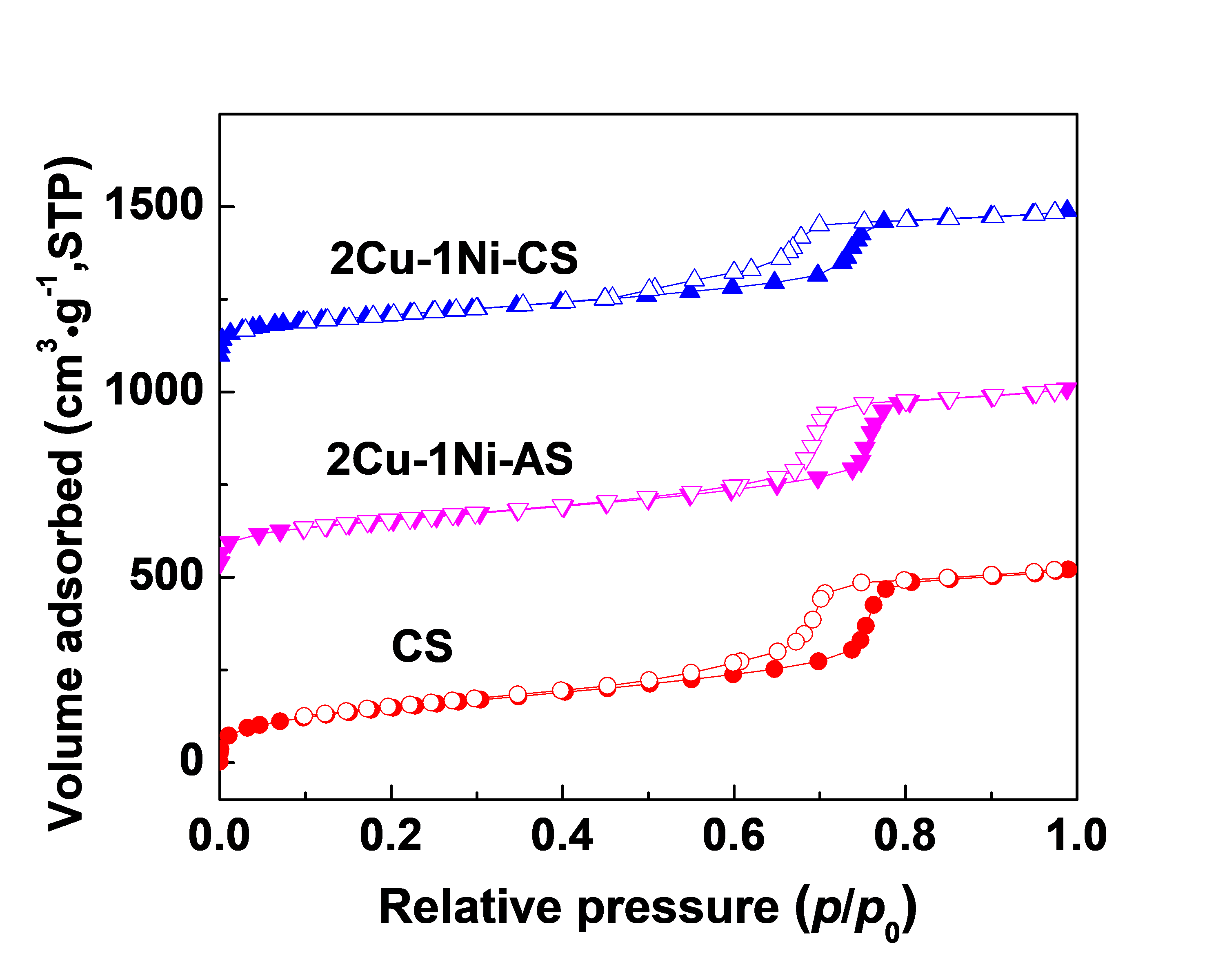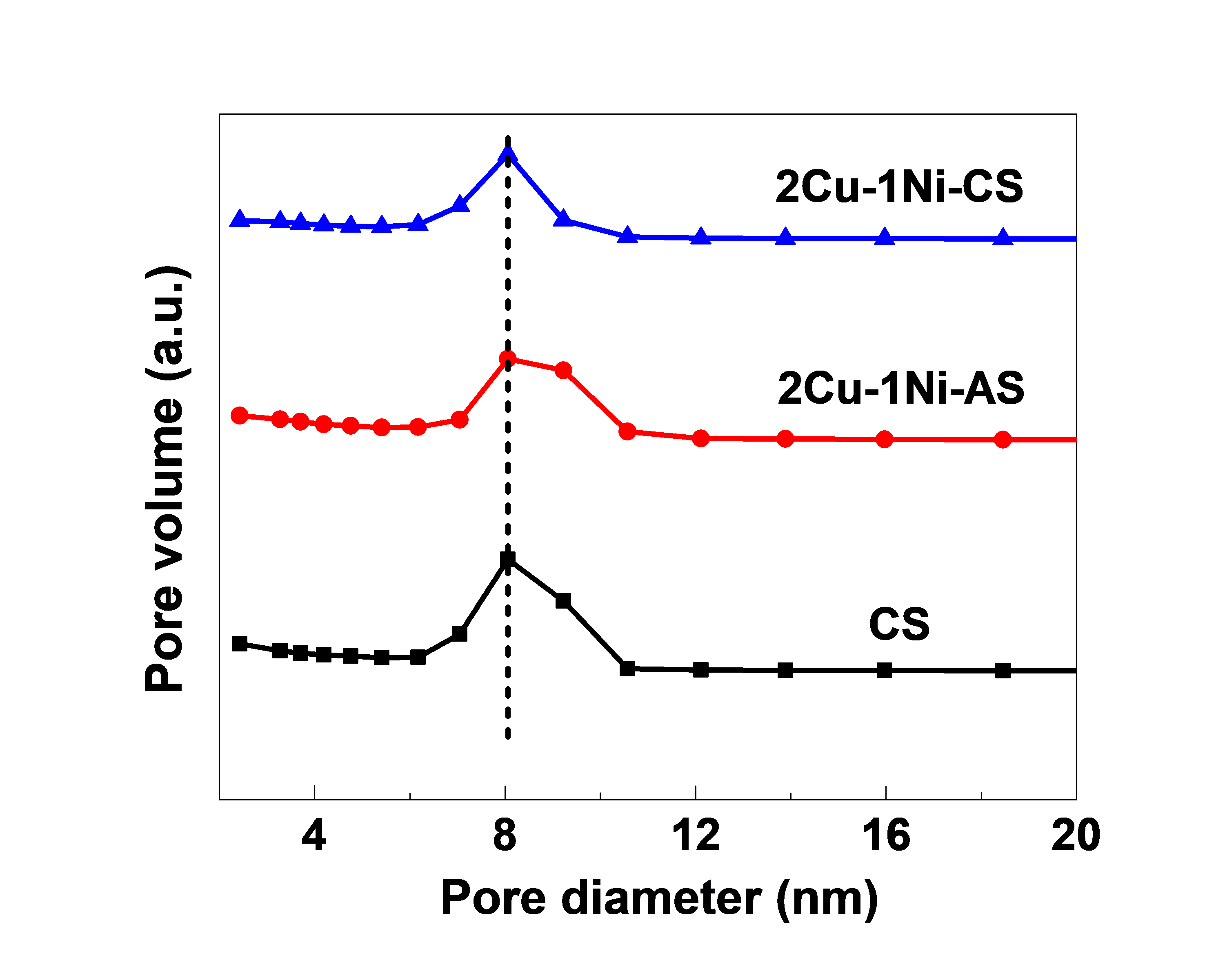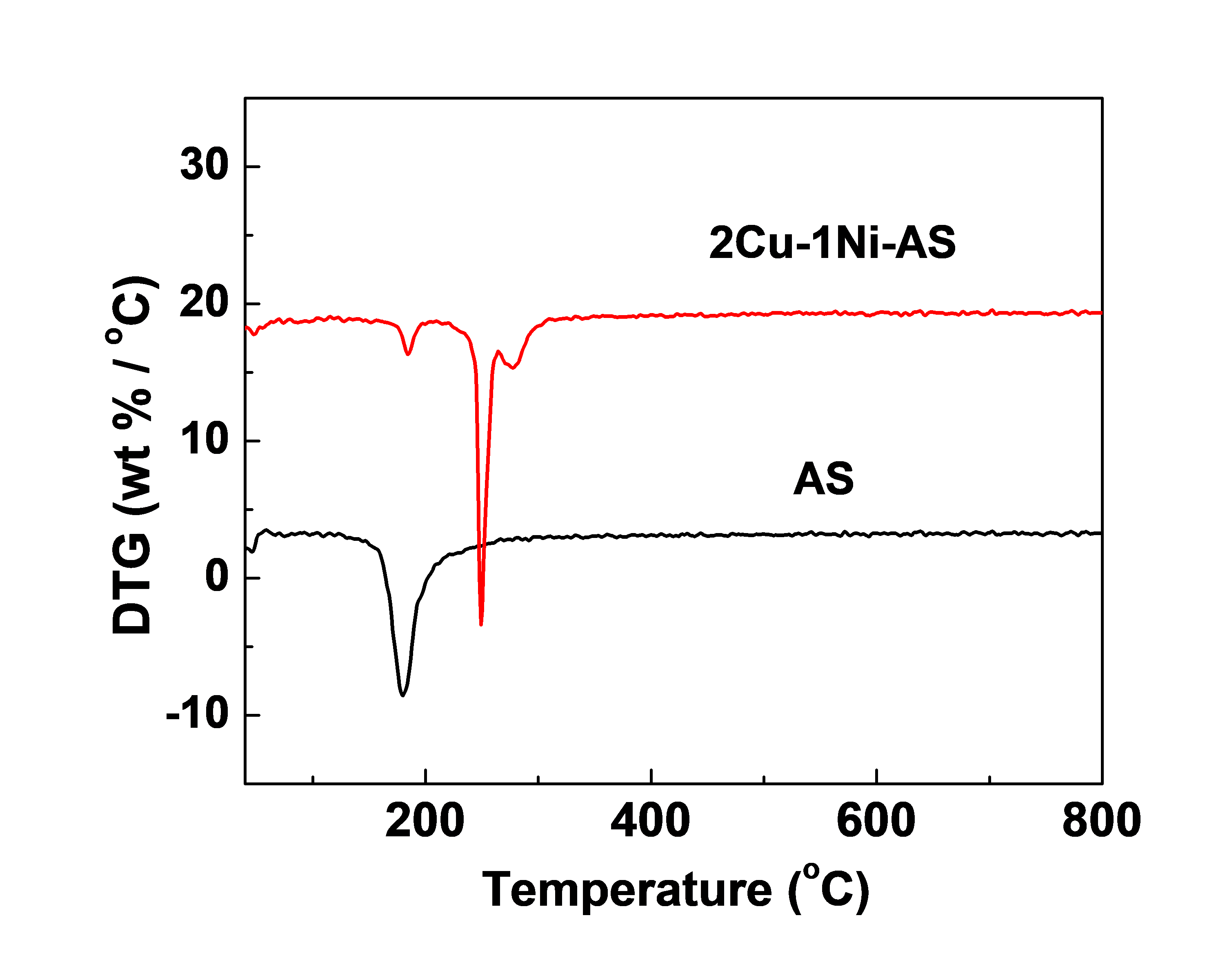Cu-NiSBA-15复合材料的制备及其性能探究毕业论文
2020-07-05 17:20:06
摘 要
化石燃料的燃烧造成大量的CO的排放已经产生了严重的环境问题,通常采用催化氧化的方法来消除CO。目前发展高效的催化剂,实现CO的低温氧化引起了研究者们的广泛关注。介孔分子筛SBA-15因其具有较高的比表面积,大的孔体积,可调的孔径等优点,目前成为众多负载型催化剂的优良载体。金属氧化物在载体SBA-15上的分散度是影响催化剂活性至关重要的因素。因此如何提高活性氧化物分散性就成为了实验的关键点。
本文利用原粉SBA-15(AS)模板剂与硅壁之间的限阈空间,以AS作为载体,采用固相研磨法将Cu和Ni两种金属的前驱体同时引入到载体的孔道中,通过焙烧得到负载有CuO和NiO双金属氧化物的催化剂Cu-Ni-AS。同时作为对比,采用传统的制备方法,以脱除模板剂的SBA-15(CS)作为载体制备得到Cu-Ni-CS。通过X射线衍射、红外光谱和热重分析等表征探究发现,相比于Cu-Ni-CS,样品Cu-Ni-AS中CuO和NiO有更高的分散度。将样品用于CO催化氧化实验,结果表明Cu-Ni-AS具有更好的催化性能。
关键词:介孔氧化硅 限阈空间 催化氧化
Preparation and Properties of Cu-Ni/SBA-15 Composites
ABSTRACT
The combustion of fossil fuels and the emission of large amounts of CO have also caused serious environmental problems. Catalytic oxidation is usually used to eliminate CO.An efficient catalyst needs to be prepared to realize the CO low temperature oxidation which has attracted the attention of researchers.Mesoporous molecular sieve SBA-15 has become a good support for many supported catalysts due to its high specific surface area, large pore volume, and adjustable pore size. The degree of dispersion of the metal oxides on the support SBA-15 is a crucial factor influencing the activity of the catalyst. Therefore, how to improve the dispersion of active oxide has become a key point of the experiment.
This article uses AS as the support, based on the confined space between template and silica walls in as-prepared SBA-15(AS), introducing both Cu and Ni metal precursors into the pores of the support by solid phase grinding at the same time. The calcination results in a catalyst Cu-Ni-AS loaded with CuO and NiO bimetal oxides. At the same time, adobt a conventional method by using SBA-15 (CS) which the template has been removed as the support to prepare Cu-Ni-CS as a comparison.Through X-ray diffraction, infrared spectroscopy, and thermogravimetric analysis, it is found that CuO and NiO in the sample Cu-Ni-AS have higher dispersity than the Cu-Ni-CS. The samples are used for CO catalytic oxidation experiments and the results show that Cu-Ni-AS has better catalytic performance.
Keywords: Mesoporous silica Confined space Catalytic oxidation
目录
摘要 I
ABSTRACT II
第一章 绪论 1
1.1 介孔分子筛概述 1
1.1.1 简介 1
1.1.2 发展历程 1
1.2 SBA-15的合成方法 3
1.2.1 传统水热法合成SBA-15 3
1.2.2 醇热合成法合成SBA-15 4
1.2.3 两步溶胶-凝胶法合成SBA-15 4
1.3 SBA-15的改性研究 4
1.3.1 掺杂金属及其化合物 4
1.3.2 嫁接有机基团 5
1.3.3 负载固体酸 6
1.4 SBA-15的改性及应用 7
1.4.1 氧化还原反应催化剂 7
1.4.2 酸碱催化剂 7
1.4.3 吸附剂 8
1.5 本文的研究思路和主要研究内容 8
第二章 实验部分 10
2.1 实验材料 10
2.2 样品的制备 10
2.2.1 SBA-15的合成 10
2.2.2 样品的固相研磨 11
2.3 样品的表征 11
2.3.1 傅里叶变换红外光谱 11
2.3.2 X射线衍射 11
2.3.3 比表面和孔结构 12
2.3.4 热重分析 12
2.4 样品的催化性能测试 12
第三章 Cu-Ni/SBA-15复合材料的制备及催化一氧化碳 14
3.1 样品研磨的历程 14
3.2 CuO和NiO的分散状态 15
3.3 限阈空间内Cu-Ni/SBA-15复合材料的分散机理 18
3.4 Cu-Ni/SBA-15复合材料的催化性能 21
第四章 结论与展望 23
4.1 结论 23
4.2 展望 23
参考文献 25
致 谢 27
第一章 绪论
1.1 介孔分子筛概述
1.1.1 简介
介孔分子筛是一种无机多孔材料,由于其具备规则和可调整的孔径且具有较大的比表面积,通常适用于大分子的催化转化和用作催化剂载体。在经过优化和改性滞后,可以弥补在热稳定性和水热稳定性方面的缺陷。
早在1971年就有科学家在进行有序介孔材料合成的研究,1992年,Kresge等[1]首次制备出M41S系列的介孔材料,通过改变合成的条件可以调整介孔分子筛的孔道尺寸和结构,可以让其拥有不同的性质。由于沸石微孔的的孔径小于1 nm,所以限制了微小分子的进入,因此很难对微孔材料进行改性。而介孔材料的孔径大小一般在2-50 nm,孔径上有了很大的选择余地,使得很多材料可以应用到改性中。
相关图片展示:











